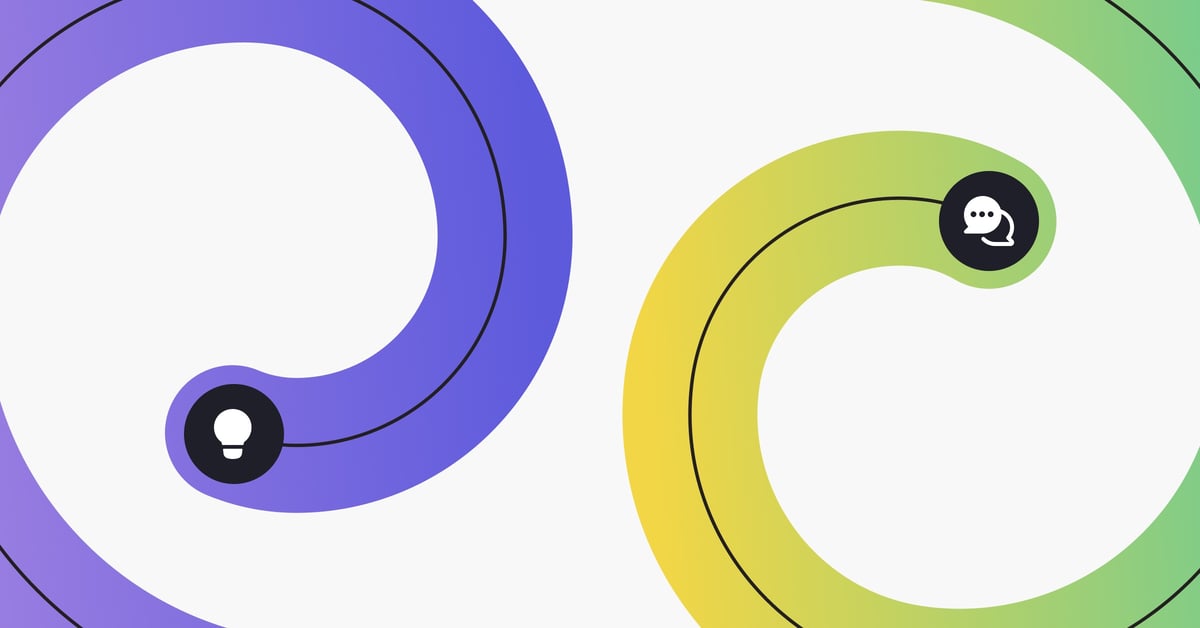Chatbots have been around for quite a few years now. But as they’ve evolved from awkward, rules-based annoyances to AI-powered chatbots and intelligent virtual agents that can converse like real people, many misconceptions have persisted.
In this article, we debunk the most common myths about chatbots and set the record straight on how these helpful little machines can supercharge your CX once and for all.
Myth #1: Todays intelligent virtual agents are still as useless as chatbots from 2010
Thanks to a new form of technology called Natural Language Processing (NLP), today’s chatbots, or intelligent virtual agents (IVAs) can understand synonyms, typos, and a range of expressions because they are trained using natural language AI models. For customers support teams, this means higher productivity, more handled requests, and higher customer satisfaction.
Read more about the difference between old school chatbots and modern day IVAs here.
Myth #2: You need a huge team to handle an AI-powered chatbot for your customer support
The truth is, automation for customer support is now at a stage where organizations can set up their bot without a huge amount of manpower. Invest in a provider with a good onboarding program, assemble a dedicated automation team, and learn from your historical support data, and you’ll be ready to provide more efficient CX with chat or ticketing automation within weeks.
Try our free CS Automation Explorer to see if chat automation is the right choice for your business.
“You’ll have more success if you assemble the right team from day one. While it can be busy in those first days of implementation, the workload then quickly drops off and levels out, with resources saved in the long run far outweighing the cost of your initial setup.”
- Ben Dyer, Lead Customer Success Manager at Ultimate
More news on chatbots and IVAs
Myth #3: People are uncomfortable talking to chatbots
People don’t mind talking to chatbots as long as they know immediately that they are doing so — otherwise, the customer may feel misled. Modern bots should announce themselves and when a case requires human input, they also tell the customer that they will be handing them over to a human agent. It also helps that NLP and machine learning make conversations more natural.
Find out how to create the Ultimate dialogue flow here.
Myth #4: Chatbots are new tech
Believe it or not, chatbots are actually 53 years old — starting with Joseph Weizenbaum’s ELIZA. ELIZA was able to mimic a psychotherapist by matching user prompts with scripted responses and even passed the Turing Test for AI. She lacked, however, a framework for contextualizing events.
In 1995, a chatbot named A.L.I.C.E began incorporating Natural Language Processing (NLP). ALICE's programming was open-sourced, which meant that other developers could incorporate her technology into their own chatbots, setting the foundation for today's league of IVAs based on conversational AI, like Siri, Alexa, and Ultimate’s virtual agents.
Myth #5: Chatbots will destroy jobs
It’s a common worry that chatbots are going to take our jobs and leave a portion of the workforce unemployed. In reality, chatbots work best with, and oftentimes require human input. In fact, in certain industries, dealing with sensitive data or urgent requests, end-to-end automation will never be the goal, even if it were technically possible.
Read on about sustainable bank Tomorrow’s success story with chat automation here.
“I believe that in the future, we’ll continue to see greater interaction between bots and human customer service teams, with bots assisting human agents with pre-existing information, so that queries are handled seamlessly and to the customer’s satisfaction.”
-Arun Mani, President of FreshWorks Europe
And while the best customer service chatbots can speak and understand natural language, thanks to advances in NLP, they’re most useful for handling simple, repetitive tasks. By doing so, chatbots free up agent time for more complex cases, reducing stress for your team while keeping your customers happy.
